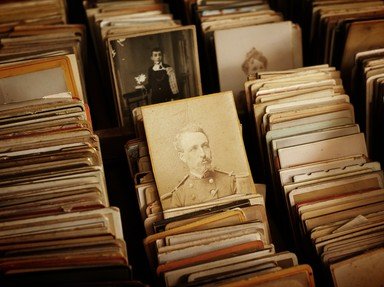Quiz Answer Key and Fun Facts
1. This innovative architect established the basis for a great number of twentieth-century residences made of stone, brick, and copper that seemed to grow out of their natural environments of grassy hills or rocky slopes. Much of his work was influenced by Mayan and Native American architecture as well as the art of European cubists.
Who is this man responsible for the Prairie School movement and organic architecture and is famous for so many buildings in the United States, such as Fallingwater and the Guggenheim Museum?
2. Putting aside the God-centered focus of art from the Medieval period, this master focused on a more humanist approach by portraying realistic people instead. He also introduced the world of painting to a new perspective, one that relied on a vanishing point, three-dimensionality, and chiaroscuro.
What is the name of this fifteenth-century artist whose works, like "Holy Trinity" and "The Expulsion from the Garden of Eden", had such an impact on other artists, despite his having lived for only twenty-six years? (His name means "messy Thomas".)
3. During his lifetime, this painter sold only one painting, but in 1990 a portrait of his physician sold for $82.5 million. A year spent in a mental institution in Saint-Remy, France, marks some of his best production of post-impressionist work. His art had an impact on Fauvism and Modernism, but his real fame came later following the publication of his letters to his brother, letters that created an image of the tortured artist who suffered because of his drive to create.
Who was this late nineteenth-century Dutch painter celebrated for such works as "The Potato Eaters", "Irises", "Wheat Field with Cypresses", and "Starry Night"?
4. Because of this one man's action, Germany's hawkish leaders were able to convince Austria to go to war with Serbia. European nations began choosing sides, and before World War I came to an end, ten million soldiers had sacrificed their lives.
What is the name of the assassin who ignited the Great War by killing the heir to the Austrian throne, Archduke Francis Ferdinand? (Surname sounds like a commandment for a king's son to drink)
5. When these pictures were unveiled at a lecture in 1839, the people of Paris began searching throughout the city for the equipment they needed to create their own duplicates of this miracle. The phenomenon soon became such a sensation around the world that the French government bought the rights to this process of making the images and freely gave the invention to the world.
Who was this man from France who invented the technology for this "type" of an image named after him and who is considered by many to be "the father of photography"?
6. Charles-Edouard Jeanneret was a Swiss-born French painter, writer, architect, and city planner who became the first architect to champion the use of reinforced concrete, which he molded into the forms of his buildings. His radical approaches shocked the conservative traditionalists and endeared him to the open-minded young builders.
What is the more popularly recognized name of this modernist sculptor of buildings (such as the United Nations Secretariat Building in New York and the Villa Savoye in Poissy, France)? (A variation of the French for "the raven")
7. She led a grueling life of constant acting and touring throughout Europe, the United States, Canada, Australia, and South America, and she continued to do so even after her leg was amputated toward the end of her career. Victor Hugo, who watched her perform Dona Sol in his "Hernani", described her voice as "golden" and claimed that he was moved to tears.
Who was this "Divine" French stage performer who lifted the art of acting to celebrity and iconic status through her constant self-promotion as well as with her extraordinary performances?
8. This Portuguese prince is sometimes considered the founder of the Age of Exploration; oddly, however, he rarely left his own home. Despite contemporaries who dismissed his ideas as a foolish waste of time and money, he commissioned sailors to travel south toward Africa and around the Guinea coast.
What is the contemporary name for the individual from Portugal who founded a school for navigation, led the improvement of ship building, and is responsible for putting Portugal first in the race to the wealth of the Indies?
9. This Muslim theologian traveled throughout the medieval areas of the world currently recognized as Iran, Turkmenistan, and Afghanistan. All along the way, he debated local scholars and forced them to re-examine their creeds. The result was a more unified Islam.
Who is this twelfth-century student and teacher of Islam who wrote more than a hundred books concerning the Quran, some of which are today regarded as masterpieces? (Looks at the beginning like a "fraud" or "pretender")
10. The bleak materialism of this man's philosophy was responded to with criticism and anger; nevertheless, his theory of a social contract that existed between rulers and their subjects had a significant impact on European and American government. He argued that people had a right to expect the government's protection and assistance after surrendering their freedom to behave as animalistic as they desired.
Who was this seventeenth-century British philosopher who inadvertently paved the way toward democracy through his idea of the "social contract", which he explained in his book "Leviathan", and his insistence that government exists "by the people"?
Source: Author
alaspooryoric
This quiz was reviewed by FunTrivia editor
bloomsby before going online.
Any errors found in FunTrivia content are routinely corrected through our feedback system.
